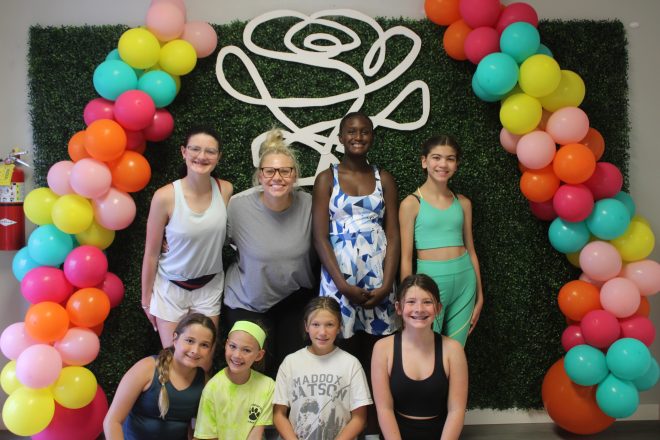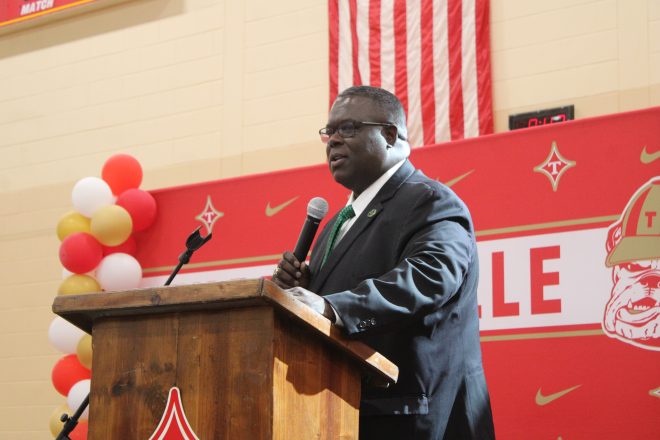Georgia Partnership for Excellence in Education study reveals concerning 3rd Grade literacy rates
Published 11:45 am Wednesday, February 1, 2023
THOMASVILLE- The Thomasville Kiwanis Club heard from guest speaker Merril Wilcox with the Georgia Partnership for Excellence in Education on Friday afternoon.
Trending
The Georgia Partnership for Excellence in Education partners leaders across the state to create better educational opportunities for students and more positive outcomes for communities.
“Our lens for looking at education has always been through the economic development lens,” Wilcox explained. “We work in partnership with the Georgia Chamber of Commerce.”
Wilcox went on to share the Georgia Partnership for Excellence in Education was actually started by the Georgia Chamber of Commerce and Georgia Economic Developers Association.
“We are here to talk about the role education plays in developing a community that has family-supporting incomes, because they can go to work at business that in turn support the community,” Wilcox said.
The Georgia Partnership for Excellence in Education was brought to Thomasville by Imagine Thomasville and the Thomasville Community Resource Center to conduct a scan of Thomasville and Thomas County. They were specifically tasked with looking at the workforce pipeline.
In order to do this, Wilcox and her team conducted a year-long study, hosting multiple focus groups and learning about the community through local individuals.
Trending
Wilcox’s goal for the study was to create attainable goals for the workforce pipeline through individual’s responses.
One of the results revealed that in order to fill jobs in the workforce pipeline, more individuals need a post-secondary education.
However, the workforce pipeline has several cracks that lead to the post-secondary education, beginning with early childhood learning.
“That early childhood piece not only allows for me to go to work as a mom, but also directly impacts that child’s learning,” Wilcox said.
Quality-rated daycares are in place to put a foundation of early learning in children, Wilcox explained.
“They help with language skills that will allow them to be successful in school,” she said. “If you’re in a house that has a lot of resources and sits and reads with your child every day, then maybe you don’t need that foundation, but if you’re just Joe Citizen and that’s not your background, these little people are given that at a quality daycare.”
The need for quality daycare is both an immediate and long-term goal Wilcox set for Thomasville.
“What we know through research is that there are currently about 1,300 slots open for children to go to,” Wilcox said. “We have over twice that number of kids under five in this community. There isn’t the access one might want.”
The early language Wilcox referred to that children pick up in daycare directly ties into early literacy.
“There is a lot of data that supports that if you have early literacy skills, you will graduate high school above the state average, regardless of your race and income level,” she said. “If you don’t, we have data that directly supports you will either end up on welfare or in jail.”
Third grade is the tipping point for early literacy skills.
Wilcox explained that prior to third grade, students are being taught to read, but from third grade on, students have to be able to read already.
“They assume you already have the language skills to succeed in the classroom,” she said. “You will do bad in math, even if you’re good at math, because you won’t have the language skills and it’ll be word problems.”
Wilcox then provided the third grade reading rates for both county schools and city schools.
“Basically, the third grade reading rates aren’t where we wish they were,” she said.
Each school’s third grade students were divided into one of four categories: Beginner, Developing, Proficient and Distinguished.
Cross Creek Elementary’s study showed that 42% of their third grade students are in the beginning phase of literacy, while 28% are still developing; 24% students are proficient in literacy and 6% fall into the distinguished category.
Jerger Elementary had the highest literacy rates of both county and city schools.
Only 12% of third grade students fell into the beginning phase of literacy, while 36% were still developing, 34% were proficient and 19% were distinguished.
However, Harper and Scott Elementary both showed concerning levels.
Over half of Harper’s third grade students are still in the beginning phase.
The study showed 73% of Harper third graders and 74% of Scott third graders are only in the beginning phase of literacy.
A meager 24% and 21% are still learning, while only 2% are proficient or even distinguished.
“There is a gap and crack in the pipeline,” Wilcox said. “It’s not a unique problem to this community; statewide we are seeing the literacy rates not where we want.”
Wilcox pointed out that many of the schools with lower literacy rates are neighborhood schools with children who are facing challenges, such as mothers who never completed high school or poverty.
“What you see is that not every student brings the same set of circumstances into the classroom with them,” she said. “Teachers have to deal with a lot before they can even get to the lesson.”
The divide in literacy is what has led to only 45% of individuals in Thomas County receiving their GED or diploma and not following a post-secondary education track, rather that be through a college or technical school.
Wilcox said she believes this is another area the community could get involved in. She suggested clubs and organizations host literacy fairs or retired educators help tutor students who may need more one-on-one attention.
She then passed out post cards that allowed members in attendance to check off if they would be interested in helping with tutoring or literacy fairs or even daycare, so the workforce pipeline could continue to funnel without these early cracks.





